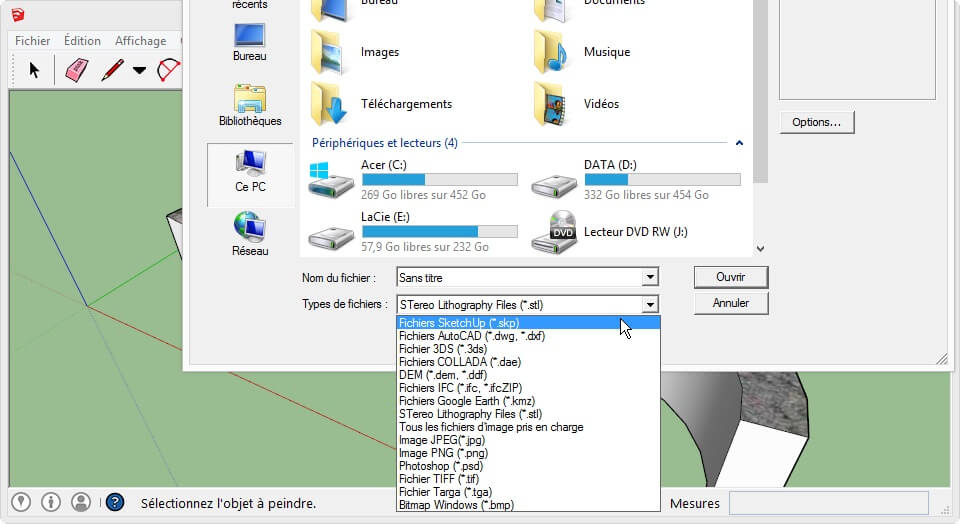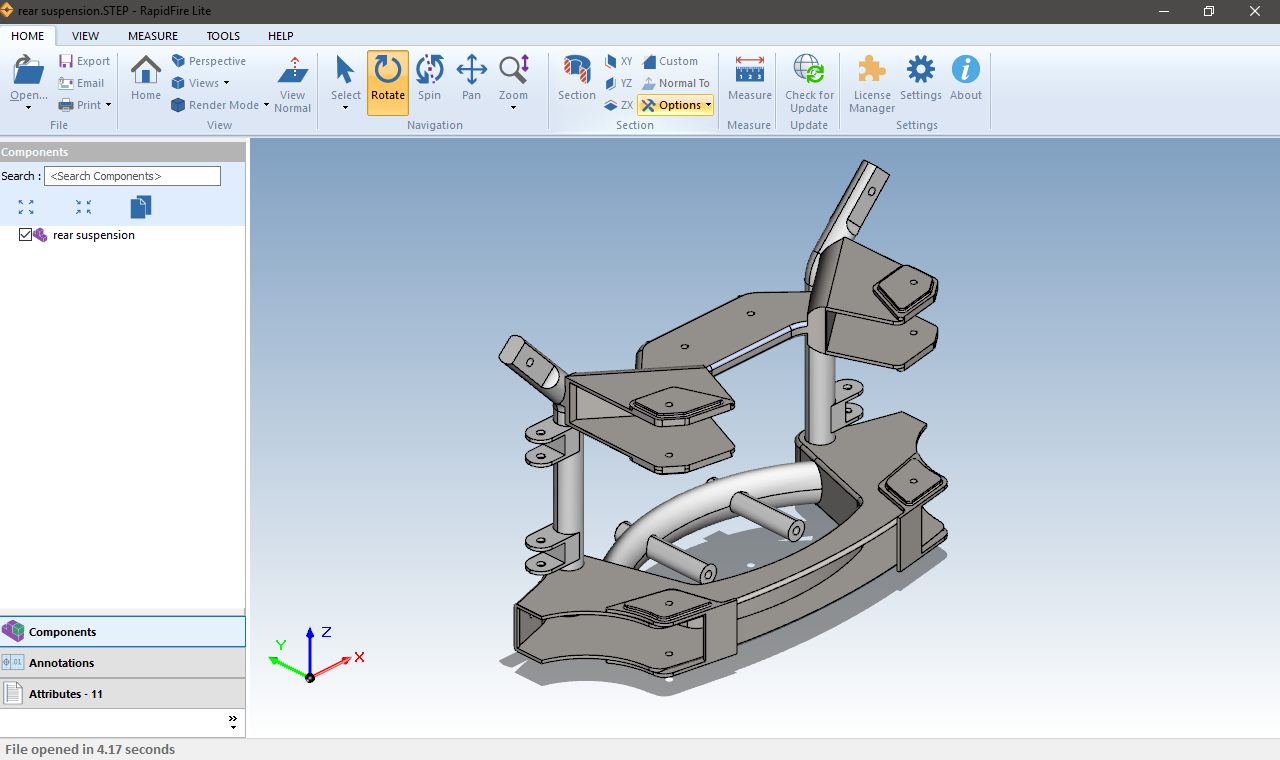


- #Sketchup 17 import stl file for free
- #Sketchup 17 import stl file software
- #Sketchup 17 import stl file download
Sometimes, if the model is really bad, I’ll just model it from scratch, using the STL for dimension references in SketchUp or by copying specific profiles from the model.
#Sketchup 17 import stl file software
STL files are created differently depending upon the software it originated from. I say that because your results will vary depending upon how bad the STL file is.

You’ll notice that I say the plugin will attempt to fix the model. While in the Import window, click Options, and check the box “Merge Coplanar Faces.” Thanks Marcus! UPDATE: 3/24/14 Thanks to Marcus Ritland, he pointed out that you can merge coplanar faces directly inside SketchUp. Another task you can run from the plugin is Plugins -> CleanUp³ -> Erase Stray Edges, and that will attempt to get rid of any extra edges in your model. That will attempt to get rid of any subdivided faces and make them whole again. Once the plugin is installed, you just go to Plugins -> CleanUp³ -> Merge Faces. You can find this plugin on the Extension Warehouse as well. He makes another great plugin called “Cleanup³” that does a good job at getting rid of extra edges and attempting to repair missing faces automatically. If you read my article on the Best Plugins for 3D printing, you’ll know that I like using the “Solid Inspector” plugin by ThomThom. So just create a new model, go to File -> Import, then be sure to change the file type to “STereo Lithography Files (.STL)”, or else you won’t be able to see the file you’re looking for. You won’t be able to open STL files directly, rather, you have to import them into an existing file. It’s the one made by SketchUp Team named “SketchUp STL”. If you don’t have the STL plugin yet, open SketchUp, and go to Window -> Extension Warehouse, and search for “STL”.
#Sketchup 17 import stl file download
The first step to working with STL files in SketchUp is to download the STL plugin from the extension warehouse. So I thought, why not combine the clip with the bracket, so I can ditch the spring clamps and easily slide the brackets to match the width of different spools? I then discovered this other model of a clip designed specifically to clip onto the aluminum extrusion I used to build my printer. So, being lazy, I resorted to using spring clamps to hold the brackets on. Also, with different width spools, I would have to adjust the bolts every time I wanted to put a different spool on. While I really liked the design, I didn’t like that I would have to disassemble part of my printer in order to bolt the brackets on. I found a really cool filament spool bracket on Thingiverse that I liked, so I downloaded it and printed out a pair. As you’re printing something, the filament needs to unreel from a spool, so most people use some sort or spool holder. Filament is the plastic that gets fed through the heated extruder nozzle and prints the objects layer by layer. One of the things I wanted to add is a filament spool holder. There are improvements I am continually making to it in order to turn it into what I consider to be the ideal printer.

While my printer works, I still only consider it 80% complete.
#Sketchup 17 import stl file for free
Check out my review video here.) That means all the plans and instructions on assembling one are available for free online so you can build your own. (UPDATE: 4/13/15 – I’ve now upgraded to a MendelMax 3. I built a MendelMax 1.5 3D printer, which is an open source 3D printer. Many times they are missing faces altogether, or extraneous edges acting as prison bars over any holes or cutouts in the model. Things like subdivided faces, (Edges that divide a face into multiple faces, even though they are on the same plane), make it impossible to use the Push/Pull tool on a surface. If you want to print a model, you just download the STL file, load it into your printer software, (I use Cura, from Ultimaker), and you’re all set.īut what if you want to make some changes to the model? If you open it in SketchUp, you’ll probably notice a lot of problems with the STL file that make it really difficult to edit. If you’re into 3D printing, you’re probably familiar with sites like Thingiverse and Youmagine, which host thousands of free 3D models from users all over the world that you can download and print out on your 3D printer. In this article, I share my tips for working with and modifying STL files so you can 3D print them. If you’re trying to work with STL files within SketchUp, you’ll find it challenging because all of the faces are subdivided and there are a ton of extra edges throughout. STL files are the most common file type for models designed for 3D printing.


 0 kommentar(er)
0 kommentar(er)
